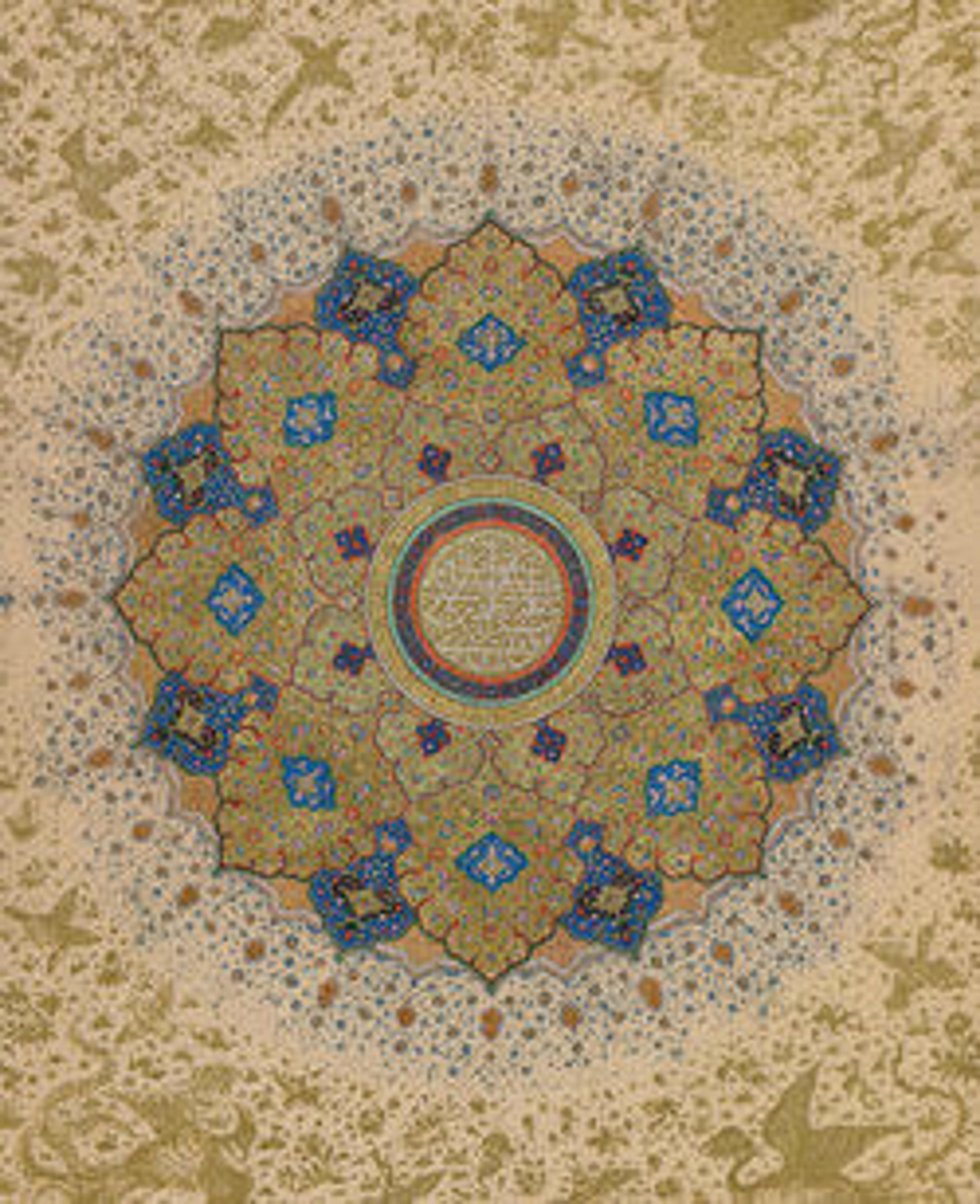"A Night-time Gathering", Folio from the Davis Album
This painting by the late Safavid painter Muhammad Zaman depicts two scholars and their Indian attendants who confer by candlelight. Signed and dated "the year 7", this work may have been executed in the seventh year of the emperor Aurangzeb, recording the first of two comets sighted in the northern hemisphere in December 1664 and April 1665. Scholars have suggested that perhaps Muhammad Zaman produced this image in India, or that he painted it in Iran in his eclectic style, which combined European and Mughal Indian elements.
Artwork Details
- Title: "A Night-time Gathering", Folio from the Davis Album
- Artist: Painting by Muhammad Zaman (Iranian, active 1649–1700)
- Date: dated 1664–65
- Geography: Made in Iran or India
- Medium: Ink, opaque watercolor, and gold on paper
- Dimensions: Page: H. 13 1/8 in. (33.3 cm)
W. 8 1/4 in. (21 cm)
Mat: H. 19 1/4 in. (48.9 cm)
W. 14 1/4 in. (36.2 cm) - Classification: Codices
- Credit Line: Theodore M. Davis Collection, Bequest of Theodore M. Davis, 1915
- Object Number: 30.95.174.2
- Curatorial Department: Islamic Art
More Artwork
Research Resources
The Met provides unparalleled resources for research and welcomes an international community of students and scholars. The Met's Open Access API is where creators and researchers can connect to the The Met collection. Open Access data and public domain images are available for unrestricted commercial and noncommercial use without permission or fee.
To request images under copyright and other restrictions, please use this Image Request form.
Feedback
We continue to research and examine historical and cultural context for objects in The Met collection. If you have comments or questions about this object record, please contact us using the form below. The Museum looks forward to receiving your comments.
